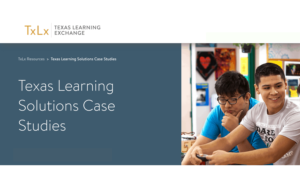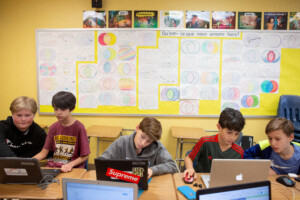Step Function Improvement
As the learning revolution matures, it is likely to be turbocharged by lessons about the neuropsychology of learning and motivation. I don’t think we know much about this and don’t use what we know very effectively, but we are likely to learn far more than we know in the coming decade. Evaluation of keystroke data and use patterns from the digital learning tools will power the next learning revolution.
Howard Gardner’s book on multiple intelligences spread like wildfire through education in the middle 90s. Well intentioned misapplication of the theory resulted in quashed enthusiasm for learning styles (e.g., smart friends like Andy Rotherham dismiss the subject as untested at best). Renzulli is still selling a learning styles assessment; School of One uses it to help create a unique playlist for every student.
Persistence appears to be the most important education (and perhaps life) variable. As a result, I believe learning styles is a bit too narrow a view–I think in terms of ‘best learning modality’, a combination of style and motivational scheme. Persistence for some students can be improved by simply applying a motivation overlay. Examples:
- Classroom management systems reinforce rules with rewards/punishments
- uBoost recognizes positive classroom behavior
- The League provides rewards for service
Some students are motivated by recognition, some by competition, some by collaboration, some by interest area, some by goals–a smart profile based on a wide variety of experiences should help us pinpoint persistence-improving experiences.
The reason I’m so bullish on adaptive content is that we have a chance to get mode and motivation right for every student. We’ll soon be able to use keystroke data from smart platforms to queue learning experiences at the appropriate instructional level that leverage interest, learning style, and motivation.
These questions help answer, “how do we get kids to do their math homework?” but there is another important overlay, “how do we teach kids to do school and life?” We assume kids come to school with a sufficient degree of self-management and for most that’s simply not the case. The ability to focus on a task linked to a long term goal–project management plus delayed gratification–is learned but not frequently taught skill. That’s why I’m enthusiastic about guided decision-making taught in Navigation 101, a program adopted stateside in Washinton State. It’s the advisory content I’ve been looking for for 15 years.
As online learning becomes the predominant delivery mode, we’ll have the opportunity to learn far more about the best mode, motivation, and management approach for every student. And that’s when we’ll see step function improvement.








0 Comments
Leave a Comment
Your email address will not be published. All fields are required.